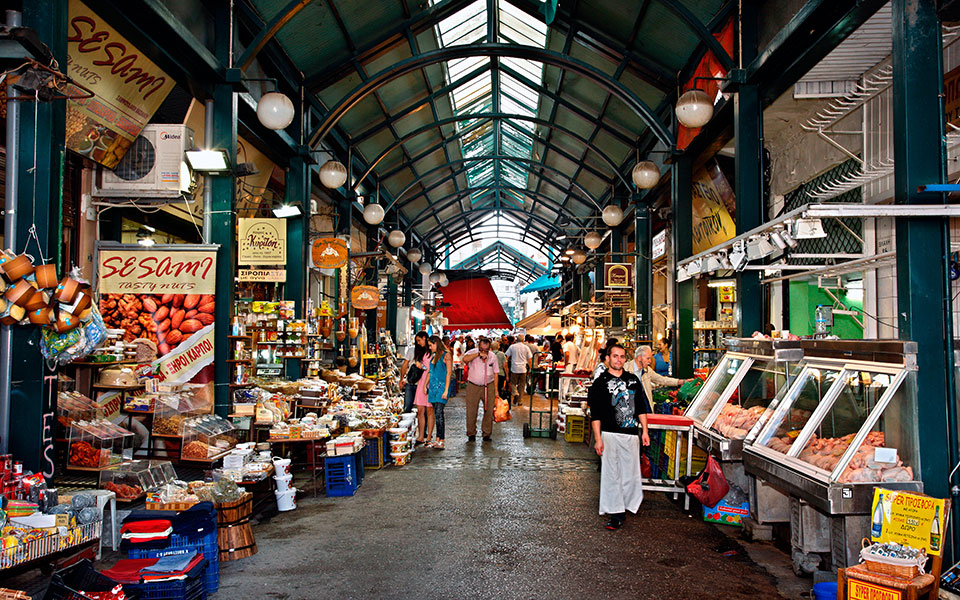The fact that food is a reason to visit Greece in and of itself isn’t exactly news. Known for being flavorful and bright, healthy, clean and uncomplicated, it features flavors similar both to other Mediterranean cuisines (the herbs and the seafood) and Middle Eastern food (the spices and the sweets). And contrary to some cuisines, say Mexican or Japanese for example, Greek food has few detractors. It’s easy to understand, and easy to like, even for picky eaters and children.
Still, while you may think that you know Greek food pretty well, it’s apparent simplicity can be deceiving; there is always something new to discover. In truth Greek food is not one thing, but a diverse collection of recipes and traditions shaped both by local conditions and world cultures.
Some dishes served in tavernas today have roots dating all the way back to the Minoans, and local ingredients play such an important role, that you can’t really say you know Greek food until you’ve tasted your way across the country. In fact, Greek gastronomy is so special that in 2018 we dedicated a whole issue to it (you can read it online here or order a hard copy here).
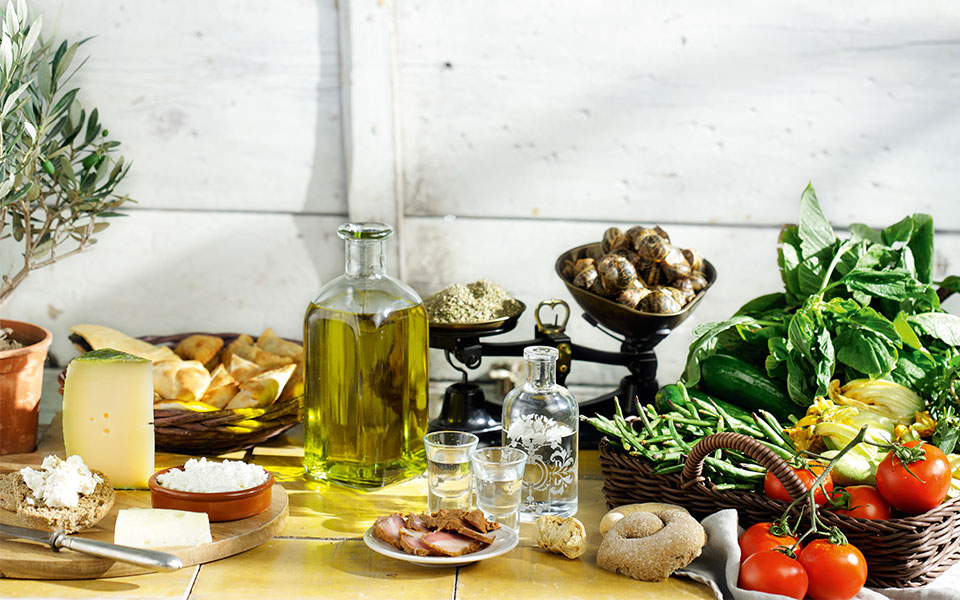
© Food Styling: Tina-Webb Photo: George Drakopoulos
On the small islands of the North Aegean, you’ll taste some of the best fish (and lobster) of your life. On Crete, the local olive oil makes even the simplest dish a fine dining experience, and in Florina, the local red peppers are turned into delicious meze. In order to recreate some of the dishes you’ll taste on your travels through Greece, you’ll need to pay special attention to the ingredients; don’t just note that there are raisins in the salad – ask what raisins. Passionate home cooks and foodies will find some products invaluable additions to their own kitchens.
To illustrate, over a hundred products grown or produced around the country boast the European Union’s PDO (protected designation of origin) or PGI (protected geographical indication) labels. All of the 76 registered PDO-labeled products are made solely with raw ingredients from the production region, and have been deemed special (and delicious) enough to deserve the protection of the label. They include famous ingredients you love and may find in your own supermarket at home (like Kalamata olives, Aegina pistachios, Kozani saffron, feta and 20 other Greek cheeses) as well as treats you may have never heard of, like the sesame and honey bars known as “melekouni”, Santorini tomatoes, and Chios chewing gum.
No matter where you’re going in Greece, delicious surprises await. If you’re a foodie, here are the products you simply must taste and/or shop for on your vacation, divided by region:
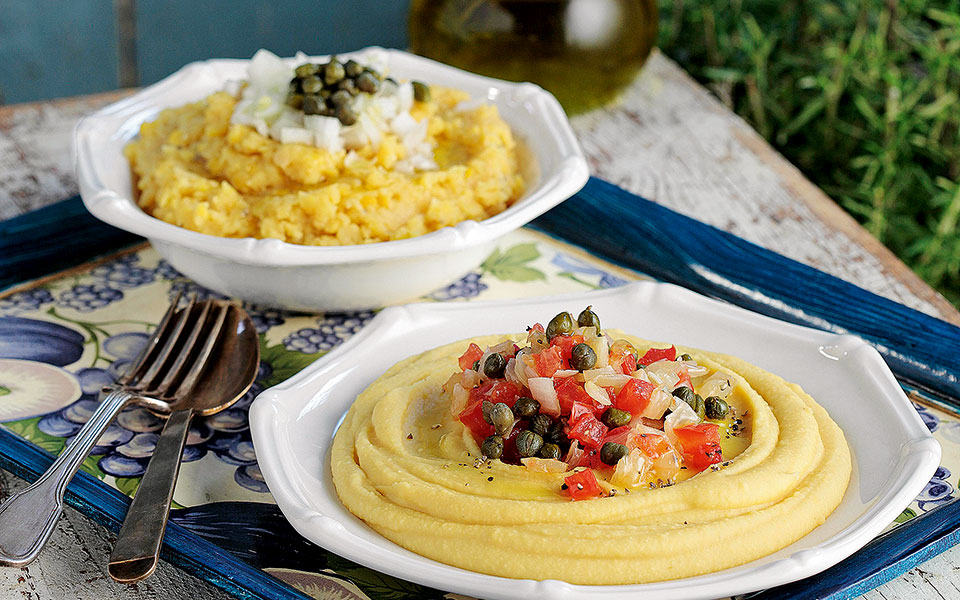
© George Drakopoulos
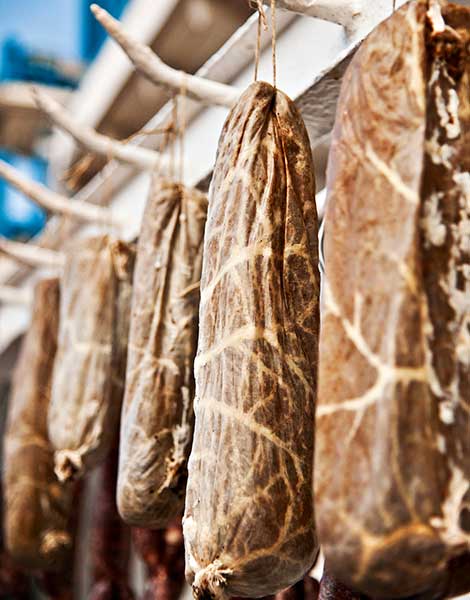
© Evelyn Foskolou
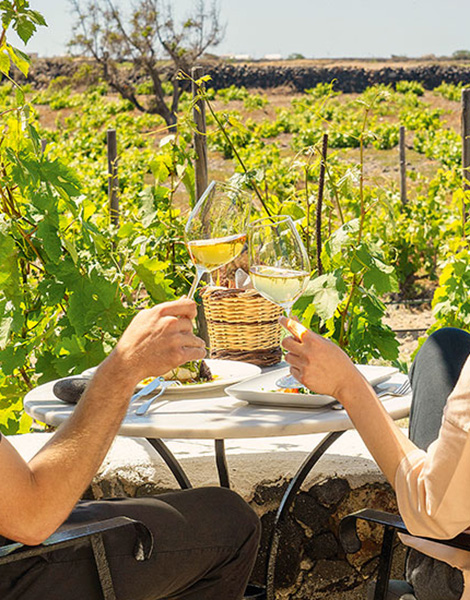
© Perikles Merakos
The Cycladic Islands
You mustn’t leave the Cyclades without trying its PDO products, such as the famous kopanisti, a tangy spread made from matured cheese of goat’s and sheep’s milk, or louza, a gorgeous cured meat scented with cinnamon, cloves and pepper. Wild capers and thyme honey are also a must, as is a packet of yellow split pea from Santorini, so you can make your own fava dip, and some San Michali cheese from Syros – the latter two also enjoy PDO status.
The Cycladic islands are renowned for their white wines, the most famous of which are those made with the Assyrtiko or Monemvasia (Malvazia) grape varieties. – N.M.
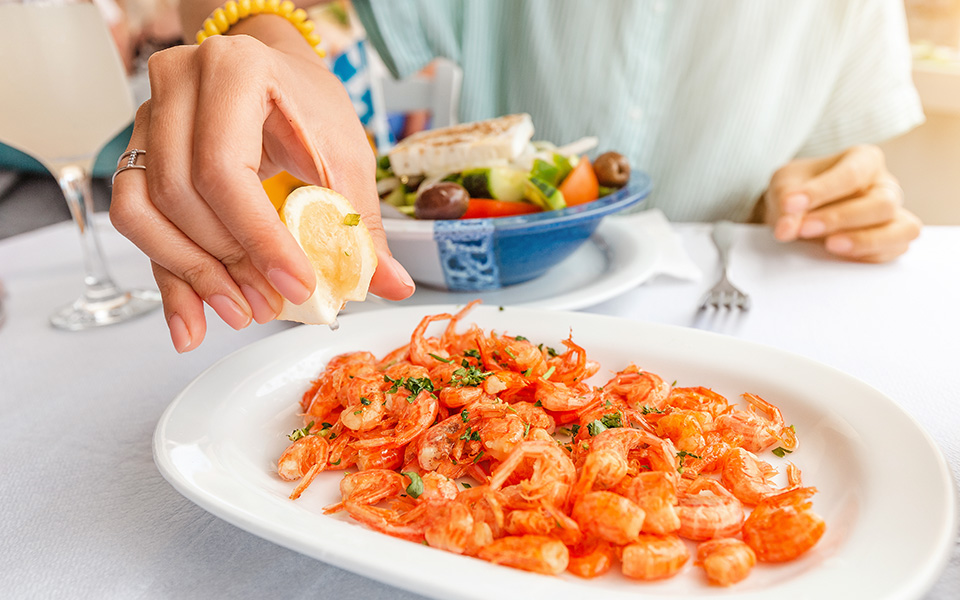
© Shutterstock

© Vangelis Zavos
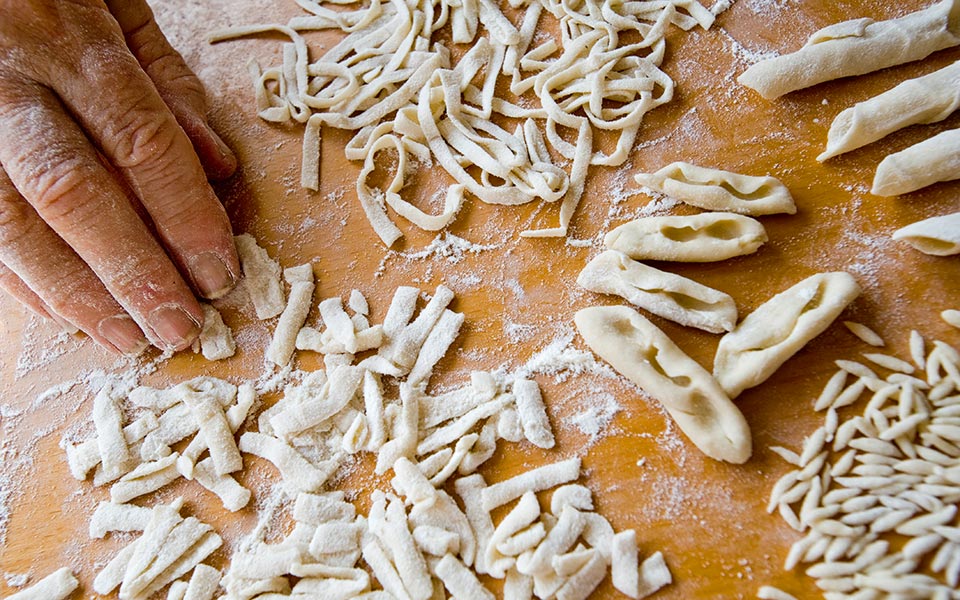
© Clairy Moustafellou
The Dodecanese Islands
Symi is renowned for its small shrimp, which are sweet and fried to crispy, golden perfection, while on Astypalea the saffron that grows wild on most parts of the island is used in all sorts of savory and sweet recipes, including the kitrinokouloura: bright yellow biscuits with a slightly peppery taste from this very special spice. Honey (thyme or wildflower) is a must on Kalymnos, and soumada, an almond drink that is traditionally served at weddings, is the favorite soft drink on Nisyros.
Karpathos produces a tagliatelle-like pasta known as makarounes, which is made by the local women’s cooperatives for various stores around the island. On Leros, taste the guava, which has been cultivated on the island for the past 60 years or so. And on Rhodes, make sure your snack pack for a day exploring the Old Town or the island’s forests includes a melekouni, a traditional energy bar made with sesame and honey. – L.K.
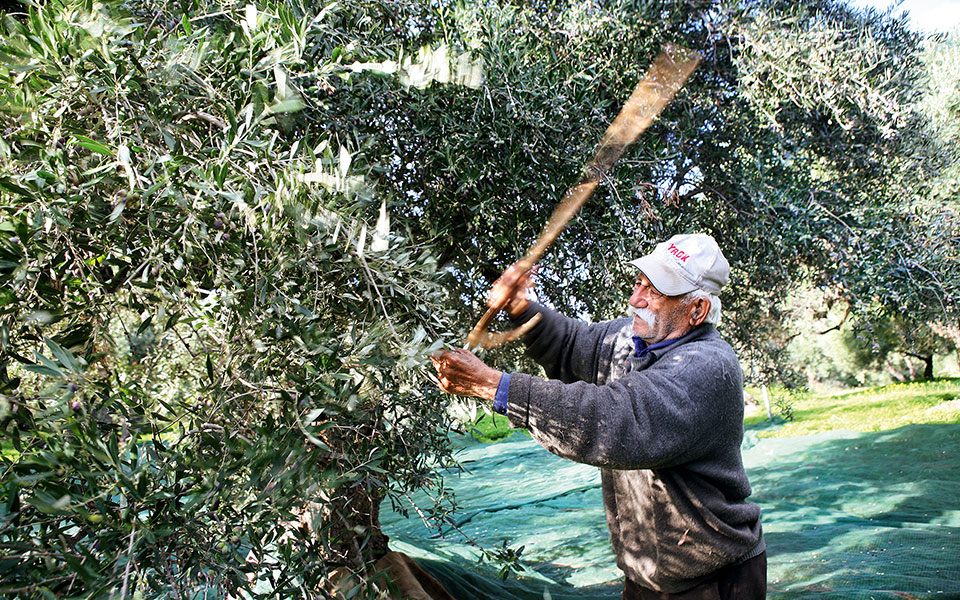
© Effie Paroutsa

© Dimitris Vlaikos
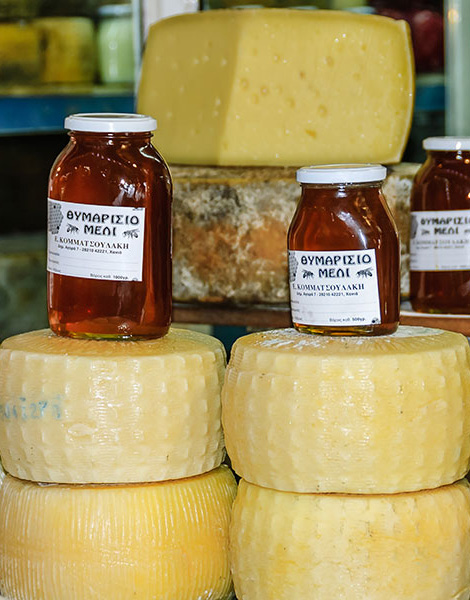
© Shutterstock
Crete
Cretans claim that their island is self-sufficient, and it’s hard to argue with them. Some of Greece’s tastiest food items are produced here, and there’s little that you can’t find on the island. Its dairy products are renowned; the most famous cheeses come from the region of Rethymno.
Myzithra is a slightly tart soft cheese made with goat’s milk (or a blend of both goat’s and sheep’s milk). Graviera is a hard cheese (it’s name derives from the Swiss Gruyére) that can be anything from a quite fresh cheese to something that’s been aged for up to a year or more and is very tangy. There are also cheeses that are produced in a well-ventilated space (called a trypa) in small makeshift dairies; these are usually small cheeses produced in very limited quantities, using fresh sheep’s milk that would otherwise go bad. Touloumotyri is another very special cheese that emerged in order to prevent waste. Made with a blend of goat’s and sheep’s milk, it is aged for a year in the hide of a sheep. The result is a strong, salty and extremely flavorful cheese.
Olive oil is produced all over the island; the best known enjoys PDO status and is made from Kolymbari olives in Hania. The honey from Sfakia in southern Hania, which has an abundance of wild herbs and woodland, is wonderful. Get paximadi (rusks) or dakos (rusks usually made from barley) from Lasithi, and your handmade skioufichta pasta from the city of Hania. – N.D.
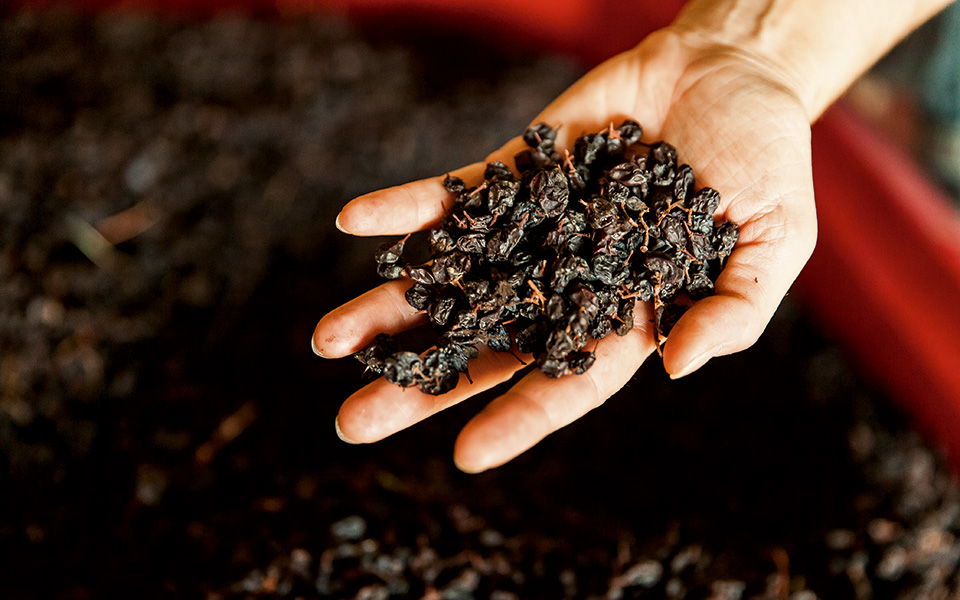
© Dimitris Vlaikos
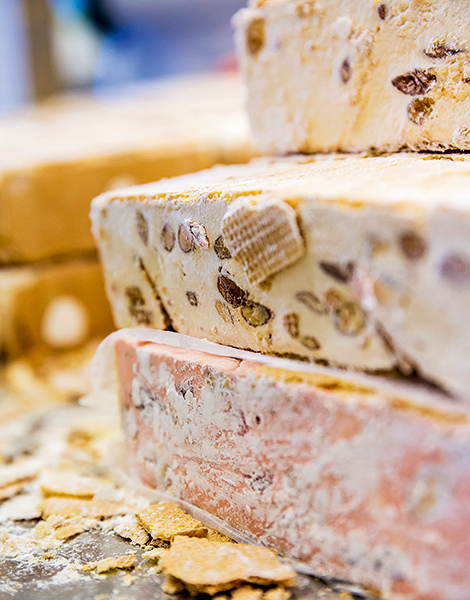
© Dionysis Kouris
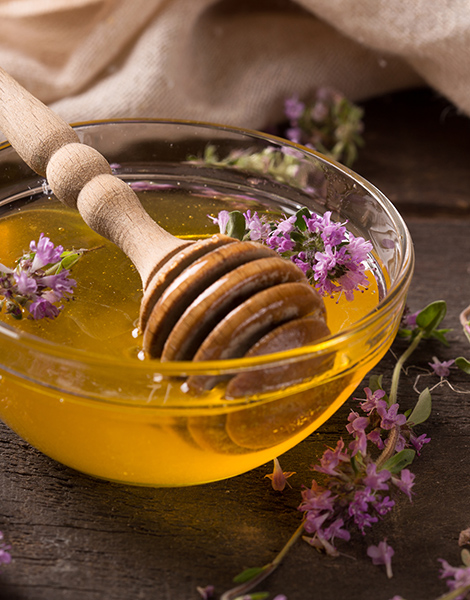
© Shutterstock
Ionian Islands
Look for the local “feta” in Kefalonia, sold in supermarkets, grocery stores and tavernas, and for prentza, a spicy cheese flavored with summer savory. Don’t leave Lefkada without some of its peppery salami and a bag of local lentils. The stars of Zakynthos are its ladotyri, a cheese aged in olive oil, and its PDO sweet and fleshy currants.
Kythira is known for its olive oil rusks and its amazing thyme honey. Corfu’s jewels include noumboulo – a cured pork or beef cold cut – as well as kumquat (in a liqueur or as a sweet preserve). Search here for spetseriko, a fiery 12-spice blend whose secret recipe dates back centuries.
Everywhere, you’ll find traditional sweets such as pasteli (sesame and honey snap), mandolata (nougat with nuts and merengue), and mandoles, made with almonds, honey and sugar. – V.C.
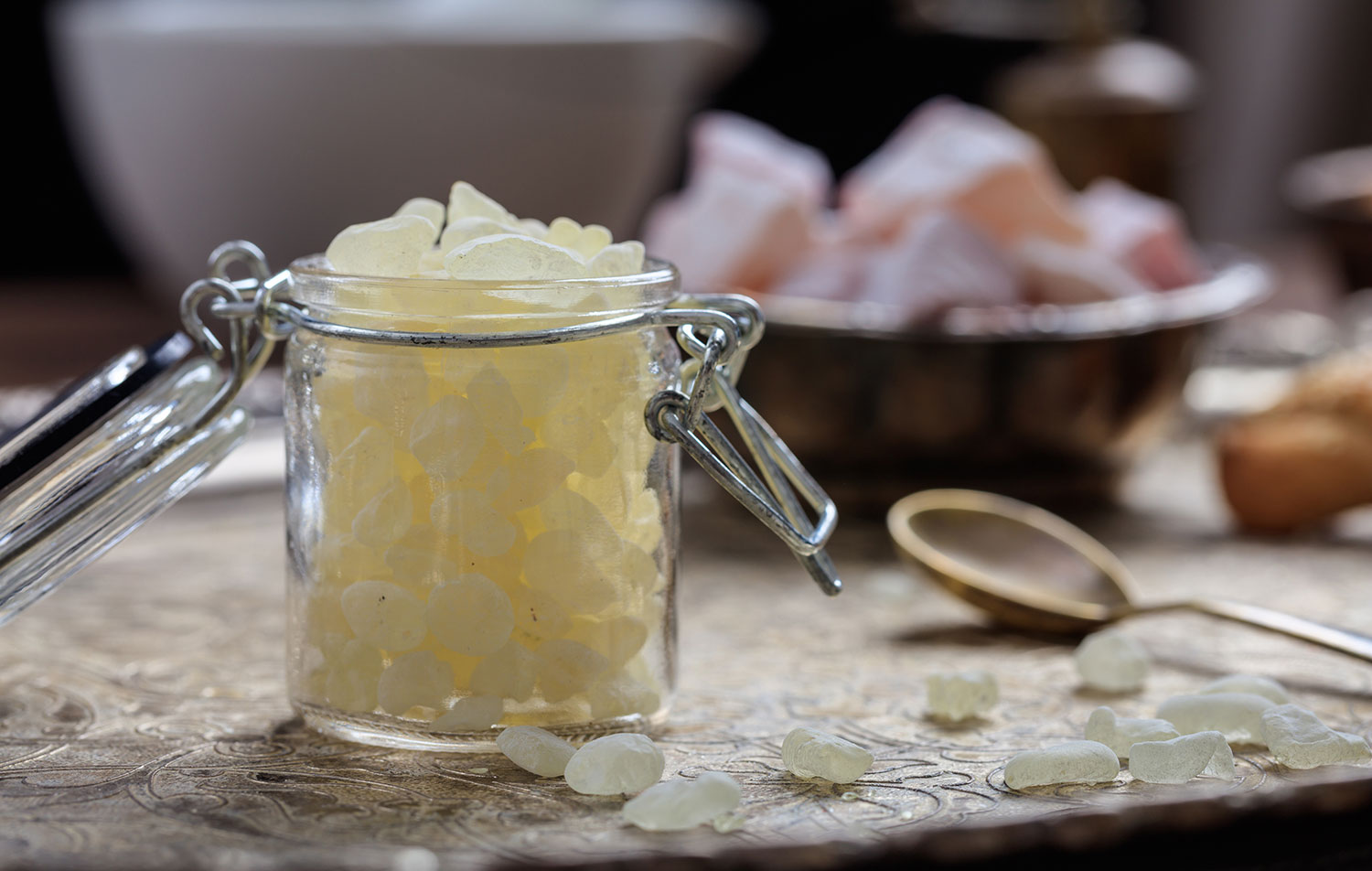
© Shutterstock
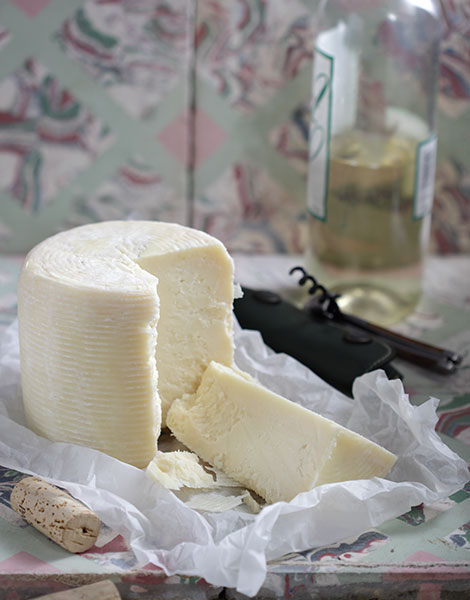
© Petros Andrianopoulos

© Vangelis Zavos
North Aegean Islands
Lesvos and Limnos produce several types of outstanding PDO feta. On Lesvos, which has a long tradition of cheesemaking, do absolutely try ladotyri, a cheese matured in olive oil, acquiring over time a more pronounced sharpness and spicy flavor. On Limnos, taste kalathaki, a white, mildly acidic, full-fat cheese, that takes its shape and name from the little baskets in which it is strained and matured.
On Samos, the island’s only cheesemaking dairy produces armogalo, a white, mildly acidic and spreadable cheese made from goat’s milk. Ikaria’s anamatomelo (“heather honey”) has a truly remarkable flavor, while Lesvos’ olive oil is light and fragrant.
You must not, of course, fail to taste the PDO Mastic of Chios, which is unique in the world, nor the island’s fragrant clementines, which enjoy PGI status. Definitely try the lobsters of Psara and Fourni, the sardines (papalines) of Lesvos from the Kalloni region, and plenty of fish on Limnos.
The sweet dessert wines of Samos and Limnos are world-renowned, made from Muscat and Muscat of Alexandria grapes, varieties that are widely cultivated on both islands. As for the several types of ouzo from Lesvos, they are famed to the ends of the Earth. – N.M

© Perikles Merakos
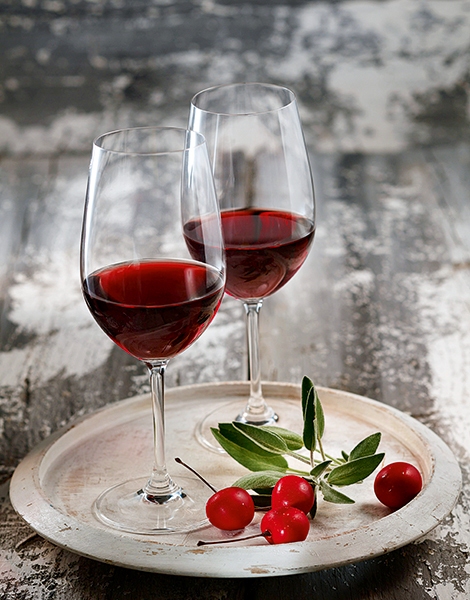
© Petros Andrianopoulos
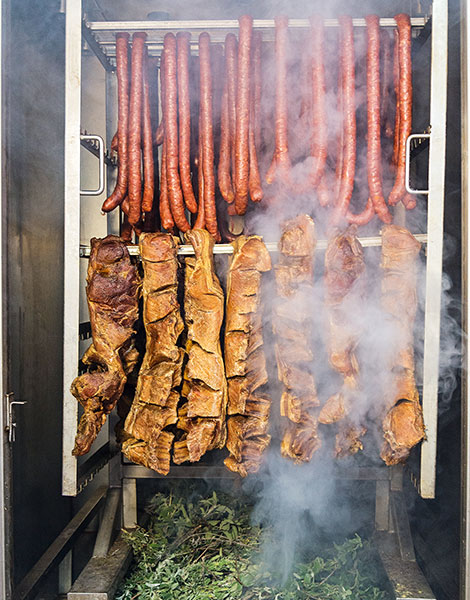
© Perikles Merakos
Peloponnese
This is the region with the greatest number of PDO products. PDO olive oils from several regions in the Peloponnese are internationally renowned, as are the world-famous Kalamata olives; these products are never absent from the Peloponnesian table. Taste the local wine – this is where the famed red Agiorgitiko is produced, as well as the crisp white Mantineia. If you find yourselves higher up in the mountains, ask for a pot of honey, ideally “vanilla pine” honey, which is thick, milky white in color, and deeply aromatic.
The region is home to the black, deliciously sweet Corinthian currants as well: the Greek railway network was expanded in the early 1900s to facilitate their export to foreign markets. The PDO eggplant of the Tsakonia region is thin, oblong and sweet, and ideal for frying. If you like pasta, try the local goges (elongated fresh pasta similar to gnocchi).
The sausages and salted meat of Mani, redolent with the scent of citrus fruit, are particularly tasty, and you can quench your thirst in Messinia and Laconia with juicy local oranges. Sfela is the regional cheese, similar to feta, but harder. Dry myzithra is very tasty, a sharp white cheese made of sheep’s and goat’s milk, as is kefalotyri, a medium-hard salty cheese. Both are ideal for grating over pasta. It is imperative that you take back some traditional pasteli (honey and sesame bars) with you, as well as dried figs from Kalamata. – N.D.
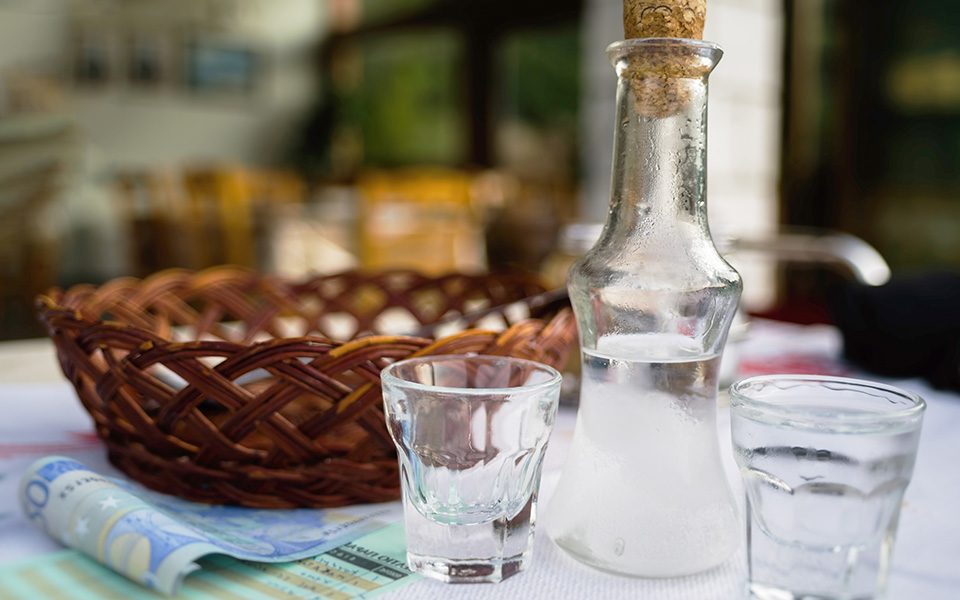
© Shutterstock
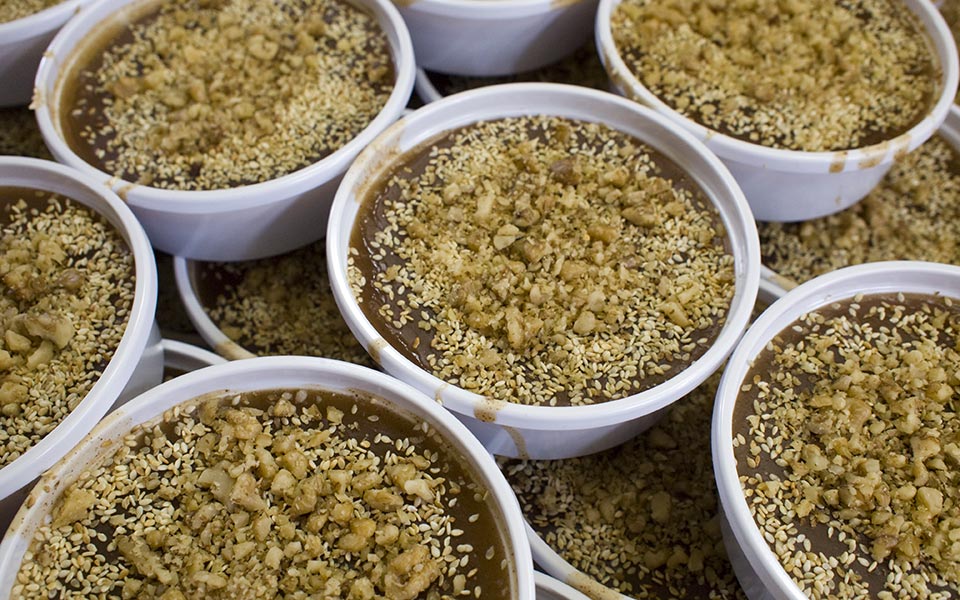
© Shutterstock

© Dimitris Vlaikos
Thessaly & Central Greece
Pilio (Pelion) is home to the delicious and PDO-certified Zagora apples, and to numerous women’s cooperatives which make preserves and marmalades from the mountain’s bounty (which includes apples, walnuts, chestnuts, quinces and sour cherries). Thick and fragrant petimezi syrup, usually made from grapes, is made from apples here and is used to great effect in both sweet and savory dishes.
The town of Farsala is famed for its halva, made with semolina, sugar and almonds; Karditsa produces incredible sausages, mostly pork with leek and onion, while Alonissos’ tuna and Skopelos’ plums are absolute musts.
Visitors to the region are strongly advised to purchase a couple of bottles of Tyrnavos tsipouro, as the local native grape from which it’s made – the Black Muscat of Tyrnavos – is a historic gem. If you’re visiting Amfissa, treat yourself to a bag of delicious, fleshy olives. In Domokos, don’t miss the katiki, a fresh spreadable white cheese, and in Arachova look for the trachanas (fermented cracked wheat), the hylopites pasta, and cheeses such as Parnassos feta, rich in fats and flavor and with a slightly tangy taste.
The figs grown in northern Evia are particularly sweet and delicious, remaining fleshy and soft even when dried. The cured variety can be found all over the island. – L.K.

© Alexandros Antoniadis
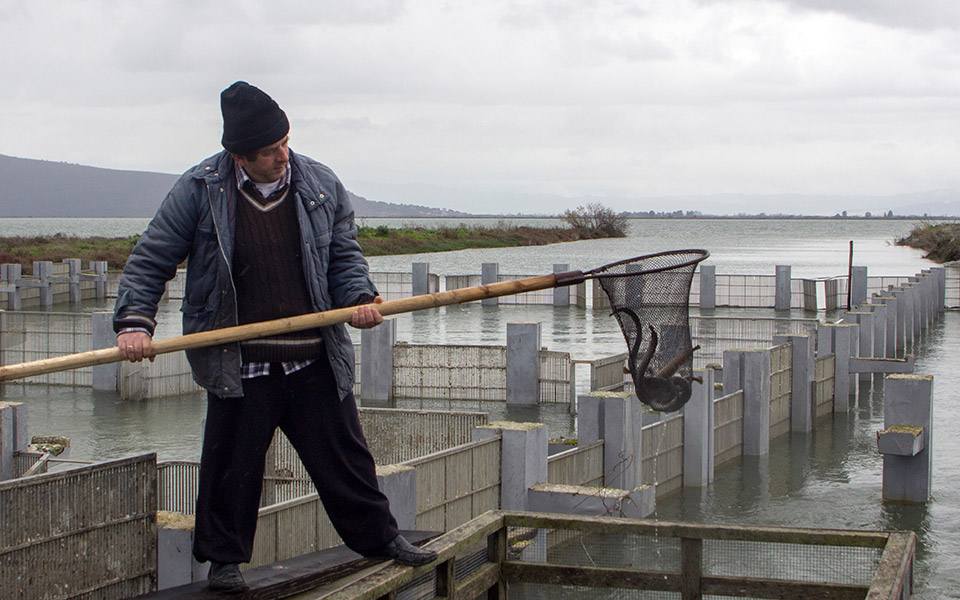
© Shutterstock
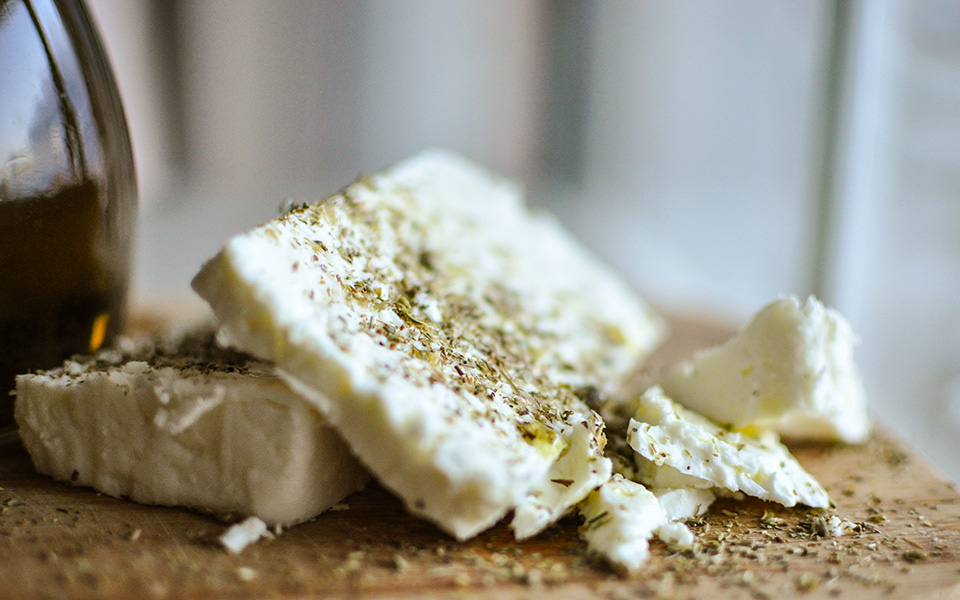
© Shutterstock
Epirus
Dairy products are ever-present in the kitchens here; they include sheep’s yogurt, PDO feta, hard and salty kefalotyri cheese, and PDO Metsovone – a smoked cheese made from a blend of goat’s, sheep’s and cow’s milk. It is produced in Metsovo using the same method employed to create Italy’s PDO Provolone Valpadana. Another cheese both typical of the area and very distinctive is galotyri (milk-cheese), which is salty, tangy and with a creamy consistency, and consumed with bread or as an accompaniment to pies.
Be sure to try some wild mushrooms from the Pindus National Park and from Zagori. If you find yourself near the Acheron or Louros rivers, ask for trout. The Arta eel is exceptionally tasty, a delicacy that’s exported to the rest of Europe. Epirus is famous for its tsipouro (pomace brandy), for the PDO wines of Zitsa and Metsovo, and for its handmade pasta. Epirote trachanas, made from milk and either flour or cracked wheat, is produced in small cottage industries or homes. – N.D.

© Clairy Moustafellou

© Dimitris Vlaikos
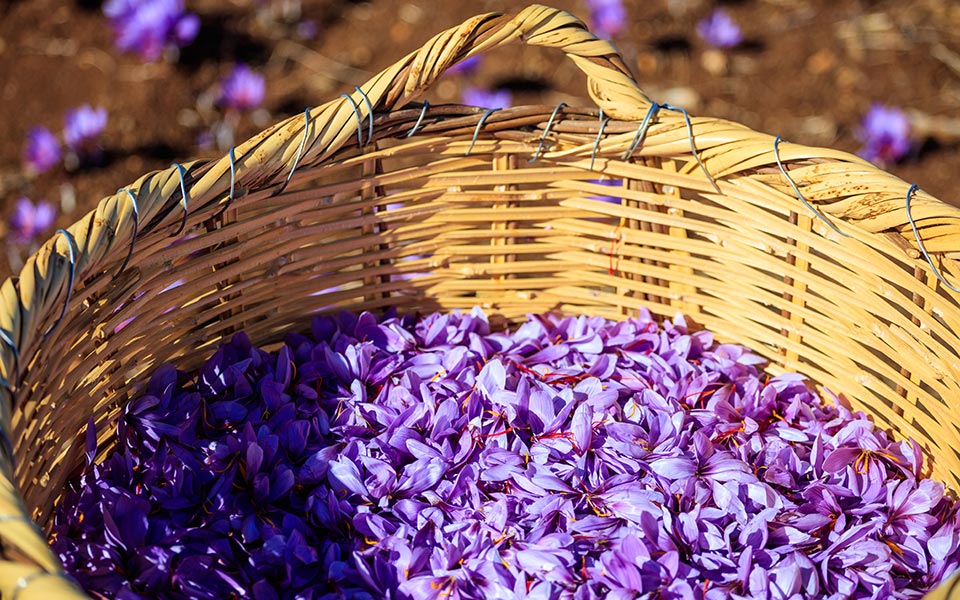
© Shutterstock
Macedonia & Thrace
The red peppers produced in the Florina area are sweet and fragrant. The beans from Prespes – near Florina – enjoy PDO status; they boil easily and are extremely delicious. Many types of wild mushrooms grow in the mountains around Grevena (fungophiles will think they’ve found heaven) and are served in many of the local tavernas.
If traveling to Kozani in October, you’ll get to see vast pale purple fields of Krokos Kozanis (Kozani saffron). You can obtain this precious spice from the local producers’ cooperative. Serres is famous both for its tasty Carolina rice and for its water buffalo meat.
The green olives and the Sithonia honey produced on Halkidiki’s middle peninsula are renowned. Heading in an eastward direction, the route is filled with gastronomic goodies: Kavala offers fish-farmed mussels as well as fresh fish and other seafood; in Drama, charcuterie is an art; syrupy pastries are a specialty in Xanthi; and Komotini is famous for its kavourmas (meat slow-cooked with salt and spices in order to preserve it), which can be enjoyed as is or fried with eggs. – L.K.

